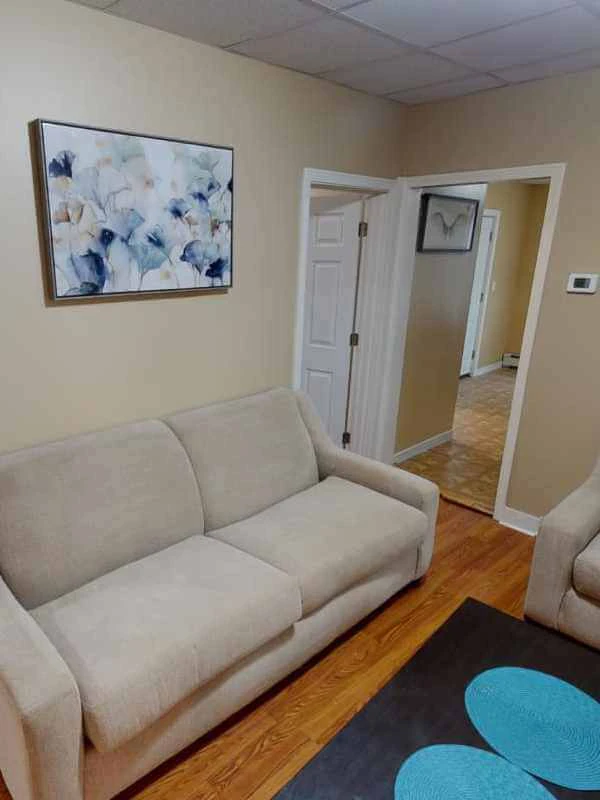Sober Living vs Halfway House: What’s the Difference?

Unfortunately, much less information exists about how many state-run or state-contracted halfway houses and halfway house residents there are. However, as we will discuss later, these numbers include facilities that serve primarily or entirely as residential correctional facilities (where people serve their entire sentences). This ambiguity means that pinning down how many people are in halfway houses each day – and how many specifically state-funded halfway houses there are – is nearly impossible. Most halfway houses don’t restrict who can live there, but the majority of people who live in a sober living home have already gone through a treatment program before going to sober living. This is mostly due to the fact that halfway houses require you to remain sober while you live there. Therefore, people who already have some level of sobriety under their belt are more likely to succeed at a halfway house than those who are new to recovery.
What Happens After You Leave a Sober Living Facility?
More often referred to as “residential treatment centers” in contemporary criminal justice and social services systems, halfway houses have been inextricably linked to the dominant punishment philosophy of their eras. Cases of COVID-19 are uniquely dangerous in halfway houses due to the work release component of many facilities. Subsequent audits identified a number of major staffing https://ecosoberhouse.com/ issues, including high turnover rates and misconduct. This pattern of inadequate staffing extends to CEC halfway houses in California, where a former facility director cited inadequate training and earnings barely above minimum wage. The clinical director of the California facility, responsible for resident health, did not possess a medical degree, or even a college degree.
- A halfway house is a residential facility designed to help people transition into independent living.
- Most houses require individuals to take part in some kind of addiction treatment program.
- Those who live in sober homes are typically free to leave at any time.
- If there are any concerns about content we have published, please reach out to us at
- While similar in design, sober homes are privately owned organizations.
- However, some halfway houses do not allow minors to conduct video visits.
- Halfway houses that serve non-offenders are often called “sober living houses” (SLHs) to avoid stigma.
Are Halfway Houses Co-ed or Gender Specific?
This is because the person’s consumption of these substances will have a negative impact on the other residents, who may be going through a medical detox and healing process. However, prescription medications, such as antidepressants and anxiety medications, are exempt from this rule. Lastly, halfway houses are often owned or sponsored by the state, while most sober-living houses are owned privately or by treatment facilities that want to provide continuing support for their patients. In both cases, the halfway house provides a structure for its residents. Halfway House staff helps recovering addicts and former inmates reintegrate into society while living in a controlled environment.
What services do halfway houses provide for residents?
- Halfway houses get money from the government, insurance, and tenant fees.
- The staff at the halfway house will be able to answer any inquiries you may have.
- Recovery residences, more commonly known as sober living homes, are dedicated to helping people re-enter society after receivingtreatment for alcohol or drug addiction.
- However, residents’ time may be structured in other halfway houses to include several mandatory activities, making participation in work and volunteer jobs difficult.
- You’ve gone through medical detox and completed an inpatient or outpatient treatment program.
The time spent in a sober-living home depends on a number of factors including strength of recovery from addiction, progress on clinical milestones and the personal living situation at home. A minimum stay of three months is recommended, but many benefit from a longer stay for sustained sobriety. Although whats a halfway house halfway houses share a lot in common with sober-living homes, there are a few key differences that set them apart. Rules, guidelines, and what to expect at a halfway out are now more precise than before. These living homes aren’t just places for recovery—they’re stepping stones back into society.

In May, an investigation by The Intercept revealed that the federal government is underreporting cases of COVID-19 in halfway houses. Not only is the Bureau of Prisons reporting fewer cases than county health officials; individuals in halfway houses who reached out to reporters described being told to keep their positive test results under wraps. It can be difficult for people in recovery to get the social interaction they need.

Some insurance plans may cover a portion of the cost of halfway house services, while others may not cover it at all. During your initial consultation with Oceans Recovery, we will do our best to place you in a facility that meets your insurance requirements. Before selecting one, determine whether or not the facility meets your unique needs. At Ocean Recovery, we have relationships with some of the best sober living homes in the area and can help place you in the facility that is the best fit for your needs and goals.

Use this tool to determine the best cityto meet, or to look for interesting stops along the way ifyou’re planning a long road trip and you need to take a breakor stay overnight. Search for hotels at the midpoint city tosplit up your drive, or explore other nearby cities and discoverlocal towns on your trip. If you’re meeting a friend halfwayin-between, you can figure out how far each person has to driveand how long it will take to arrive at the center. Even ifyou’re separated by water, you can still calculate the straightline geographic midpoint to determine the closest flight distance.
- Others go for the recovery services, such as group counseling and access to 12-step meetings, such as Alcoholics Anonymous or Narcotics Anonymous.
- Although many halfway houses offer resources for addiction recovery, not all serve that purpose.
- You’ll find structure and routine in these sober living homes that can help anchor your days.
- They also provide the same types of services most sober homes do, such as helping you to make it to 12-step meetings and teaching you life skills.
- The differences between halfway houses and sober living homes depend on the specific facilities.
- The term can also refer to a transitional home between incarceration and freedom, regardless of the residents’ drug abuse history.
Many state prison systems have similar facilities that state prisoners can transfer to before completing their prison sentence. It is important to note that recording or sharing the video is restricted in order to maintain confidentiality and security. In the event of a breach of these guidelines, visitation may be terminated. If there are any concerns about content we have published, please reach out to us at A network supports you during challenging times and helps celebrate small, unnoticed victories. They’re like the cheerleaders rooting for your success at every twist and turn.

